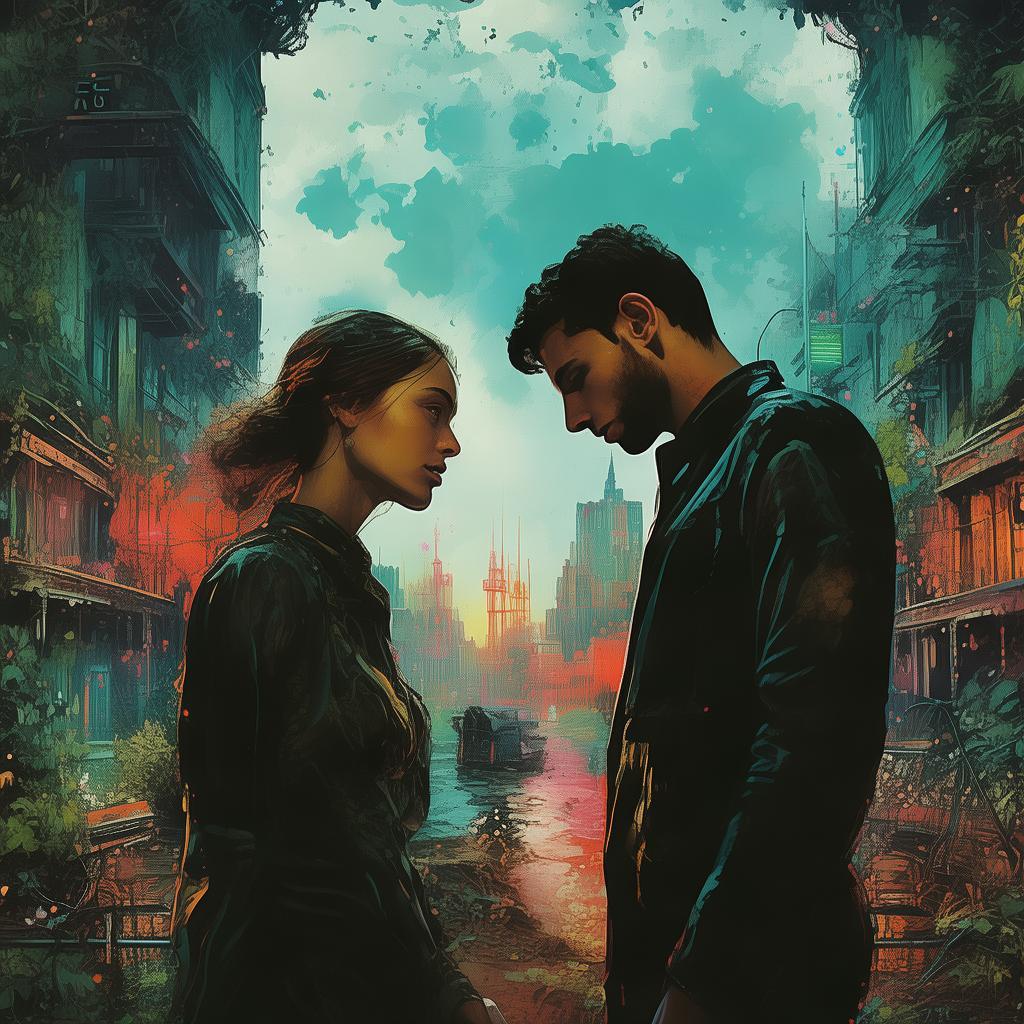The Last Petal of Love
In the heart of Renaissance Florence, where art and passion thrived, there lived a young woman named Isabella. She was the daughter of a prominent merchant, her beauty and intellect as renowned as her family's wealth. Yet, her life was not one of leisure and luxury, for she was bound by the expectations of her family and the society she lived in.
Isabella's heart belonged to a young artist, Leonardo da Vinci, whose works were already whispered about in the streets. Their love was a secret, a dangerous secret in a time when the arts were often frowned upon by the Church and the nobility. Leonardo, with his dreams of changing the world through his art, and Isabella, with her dreams of freedom and love, found solace in each other's company, a love that seemed to defy the very fabric of their lives.
However, their love was not to be. Isabella's family, seeing Leonardo as a threat to their status and fortune, plotted his downfall. They were not the only ones who saw Leonardo as a rival; the Church also viewed his work as a challenge to their authority. The walls of Florence were closing in on them, and their love was a flower that could not bloom in the garden of time.
One evening, as the moonlight bathed the city in a silver glow, Isabella found herself at the home of her dear friend, Lucrezia, where Leonardo was hiding. The air was thick with tension as they spoke of their future, their love, and the dangers that loomed over them. It was then that Leonardo revealed a secret that would change everything: he had been asked by the Medici family to create a painting that would outshine all others, a painting that would earn him a place in history and the patronage of the most powerful family in Florence.
The painting was to be a portrait of Isabella, a masterpiece that would capture her beauty and spirit in a way that no other had ever done. But there was a catch; the portrait was to be a symbol of purity and devotion, and Isabella knew that her love for Leonardo could never be portrayed in such a way. The secret was a heavy burden on her heart, and she struggled with the moral implications of becoming the subject of a painting that would lie about her true nature.
The conflict between her love for Leonardo and her family's honor was at its peak when Isabella's father discovered her secret meeting with Leonardo. He threatened to expose the artist and Isabella to the authorities, knowing that such a scandal would be the end of Leonardo's career and could even lead to his death. In a desperate bid to protect Leonardo, Isabella offered to become the model for the portrait, but on one condition: the portrait must be a true representation of their love, with all its passion and danger.

The family, seeing an opportunity to elevate their own status, agreed to Isabella's terms. Leonardo set to work, and the portrait became the talk of Florence. It was a masterpiece that captivated the city, and Isabella's beauty and spirit were captured in a way that no one had ever seen before. Yet, as the city admired the portrait, the true nature of the love it depicted was a secret known only to a few.
The climax of their love story came when the Medici family, impressed by the portrait, offered Leonardo a position as their court painter. It was a chance to secure his future, but it came at a cost. Isabella knew that Leonardo's acceptance of the position would mean the end of their love, for he would be bound to the Medici's whims and the expectations of the court.
In a heart-wrenching decision, Isabella chose her family's honor over her love. She asked Leonardo to leave Florence, to go to the court of the Medici and embrace his new life. With tears in her eyes, she whispered the words that would shatter their love, "You must go, Leonardo. Your talent is too great to be confined to our little world."
Leonardo, torn between his love for Isabella and his ambition, agreed to leave. As they stood on the cusp of their separate futures, their love was a memory, a fleeting moment in the garden of time.
In the years that followed, Isabella's portrait became one of the most celebrated works in the history of art, but it was a symbol of a love that had withered away. Leonardo, now a court painter, often thought of Isabella, wondering if he had made the right choice. He had achieved fame and fortune, but at what cost?
As the years passed, the garden of time continued to bloom, but the last petal of Isabella's love remained untouched, a testament to the power of love and the sacrifices it demands.
✨ Original Statement ✨
All articles published on this website (including but not limited to text, images, videos, and other content) are original or authorized for reposting and are protected by relevant laws. Without the explicit written permission of this website, no individual or organization may copy, modify, repost, or use the content for commercial purposes.
If you need to quote or cooperate, please contact this site for authorization. We reserve the right to pursue legal responsibility for any unauthorized use.
Hereby declared.









